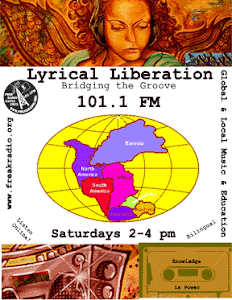Subcomandante Marcos got everyone’s attention when he presented "Feeling Red: The Calendar and Geography of War" at a symposium in honor of the late Andrés Aubry in San Cristóbal de las Casas, Chiapas. Marcos announced that they (the EZLN) would not be attending conferences, encuentros or giving interviews for a “good while.” He
said the Zapatista communities are surrounded by military camps and paramilitaries and are preparing for the war which they see coming. "Those of us who have made war know how to recognize the paths by which it is prepared and brought near," Marcos In May 2007, Mexico’s federal government expropriated 14 thousand hectares of land (approximately 35,580 acres) in the Lacandón Jungle of Chiapas. Somewhat suspiciously, it did not announce exactly where these lands were located, but, nevertheless, asserted “ecological concerns” as its reason. A Chiapas non-governmental organization (NGO), Maderas del Pueblo del Sureste (Woods of the People of the Southeast), filed a freedom of information request to find out
exactly where the expropriated lands were located. Woods of the People finally received the information it requested and La Jornada published an article regarding the specifics of that information in October 2007. (http://www.jornada.unam.mx/2007/10/22/index.php?section= politica&article= 010n1pol)
It is important to remember that, as a result of the expropriation decree, state and federal police violently evicted several indigenous communities from the Montes Azules Biosphere Reserve in an August 18, 2007 surprise attack. Residents of 2 communities, San Manuel and El Buen Samaritano, were forced at gunpoint to get into helicopters. They were then removed from their homes, which were ransacked and
burned; all their belongings damaged or stolen. Six (male) heads of family were taken to El Amate prison, while at least 33 women, small children and youths were held in a former brothel. Some of those removed at gunpoint were Zapatista support bases, others were members of ARIC-Independent and/or ARIC UU.
The expropriated lands consist of eight sections. One section borders on Amador Hernández, which some may remember for its brave and prolonged resistance to the Army in 1999. At the time of that standoff, Subcomandante Marcos said the region was rich in oil. The entire area of eight sections has a wealth of biodiversity, forests containing precious woods, unparalleled natural beauty and an abundant supply of uncontaminated fresh water in the form of white water rivers, natural springs and aquifers. It also has many Other Campaign supporters, both Zapatistas and non-Zapatistas.
As well as one section inside the Montes Azules, the expropriated area includes some of the area outside of the Montes Azules in the region of Las Cañadas (the Canyons) and affects the “26 ejidos legalized in 1989.” In order to fully appreciate the significance of this information, a little history of the region is helpful.
Sometime between 1950 and 1960, an exodus of indigenous people into the sparsely settled Cañadas of the Lacandón Jungle began. Some went in order to establish new settlements and escape the extremely harsh life of exploitation as peons on the fincas (estates). Others were no longer needed on the fincas as land use changed from cash crops to cattle ranching, a less labor intensive business. The lowly-paid farm workers were turned loose without land, money or homes. They went in search of land on which to settle and grow their food. The new Jungle settlements founded by the colonists began to apply for ejido title to their lands under Article 27 of the new Mexican Constitution. Eventually, some obtained title to the lands they had settled. Others were not so fortunate because the process of
obtaining title was often backlogged for many years in government red tape and bureaucracy.
The settlers faced incredible obstacles. Most were subsistence farmers. There were few schools and no health care services. The new communities had no electricity or safe drinking water, no sewage disposal. The region had few roads, and those which existed were deeply rutted dirt trails, making access to nearby cities where they
could sell their cash crops and purchase their supplies extremely difficult. In other words, the settlers were impoverished and ignored by the federal and state governments in so far as those governments did not extend public services to them.
Then, in 1972, Mexican president Luis Echeverría granted 1,517,372.8 acres (614,321 hectáreas) of land to a small group of indigenous people (66 families), who he called Lacandóns, living in the heart of the Jungle. The 1972 Presidential Decree created a legal entity known today as “the Lacandón Community.” There were several practical effects of this decree on the communities of the Cañadas: 1) 26 well-
established communities fell inside the limits of the “Lacandon Community,” thereby placing their land tenure at risk and making them vulnerable to eviction; and 2) it closed off the possibility of future expansion by the next generation of inhabitants of the Cañadas. The Jungle was no longer open to further settlement. The consequences of this decree were not lost on the youth of the Cañadas. While their fathers may have a piece of land to farm now, the sons had nowhere they could go to acquire land for themselves when they married and had their own families to feed.
In response to both the presidential decree and in order to collectively overcome the economic obstacles they faced, on December 14, 1975, the settlers in the Cañadas to the east of Ocosingo, formed the Union of Ejidos Quiptic Ta Lecubtesel (United for Our Strength, in Tzeltal). Quiptic’s demands were: 1) regularization (legalization) of land tenancy; 2) opposition to taxes imposed by the government for
services they did not provide; and 3) opposition to fines for planting their milpa (cornfield) or cutting firewood for cooking. The first demand and that which united Quiptic from the beginning was to legalize ownership of “the 26 communities” established before the Lacandón Community was created and which fell inside its boundaries. Quiptic maintained a militant stance despite wanting to work with
government programs and advisors to commercialize their products and obtain credit. The reason for the militancy was the precarious tenancy of “the 26 communities” affected by the presidential Decree of the Lacandon Community, over which hung the threat of eviction.
Quiptic later joined together with campesino organizations from other regions of the Jungle (Altamirano and Las Margaritas) to form the Union of Unions (UU). After a UU split, the grouping to which the former Quiptic belonged eventually formed the Rural Association of Collective Interest (ARIC, its initials in Spanish), which achieved the legalization of “the 26 communities” as ejidos in 1989. By that
time, many of ARIC’s members were also clandestine members of the EZLN. Throughout its different formations and political splits, the issue of “the 26 communities” always held those from the Cañadas east of Ocosingo together.
Now, according to the report in La Jornada, the federal government has expropriated lands which 15 of those 26 communities use and work. Currently, several indigenous organizations, including the EZLN and the various ARIC and UU groupings, inhabit the lands involved. The expropriation is a direct provocation to the EZLN, as well as to the campesino organizations that struggled for many years to legally own
and work these lands. It raises the threat of more violent evictions like those of San Manuel and Buen Samaritano.
In our conversations with residents of the Cañadas, we learned that government agents are visiting the region and making known government intentions to expel communities pursuant to the May 2007 decree. One of our sources told us that this is like waving a red flag in front of a bull and, consequently, that the region’s residents and their social organizations are uniting to fight against the government’s plan to evict them.
Indeed, not long after these interviews, a press release appeared on
the Fray Bartolomé de Las Casas Human Rights Center’s web page, denouncing the expropriation and reporting on a meeting in Amador Hernández of 640 delegates from the communities and organizations throughout the Cañadas.
The idea of uniting the different organizations to which campesinos of this region belong was one motive behind the Other Campaign. One of our interviews addressed this question and what we learned is that the Other Campaign has been remarkably successful in this regard, at least in the Cañadas. It has provided an opportunity for the campesino organizations which do not want to lose their identity by joining the EZLN to work together with the EZLN on issues of common
concern throughout the region, a ray of hope in what could otherwise be seen as a gloomy “prewar” atmosphere. When asked why Marcos said that they were preparing for war, one of the compañeros answered by saying: “If we prepare for war well enough, there may not be a war.”
Subscribe to:
Post Comments (Atom)



No comments:
Post a Comment